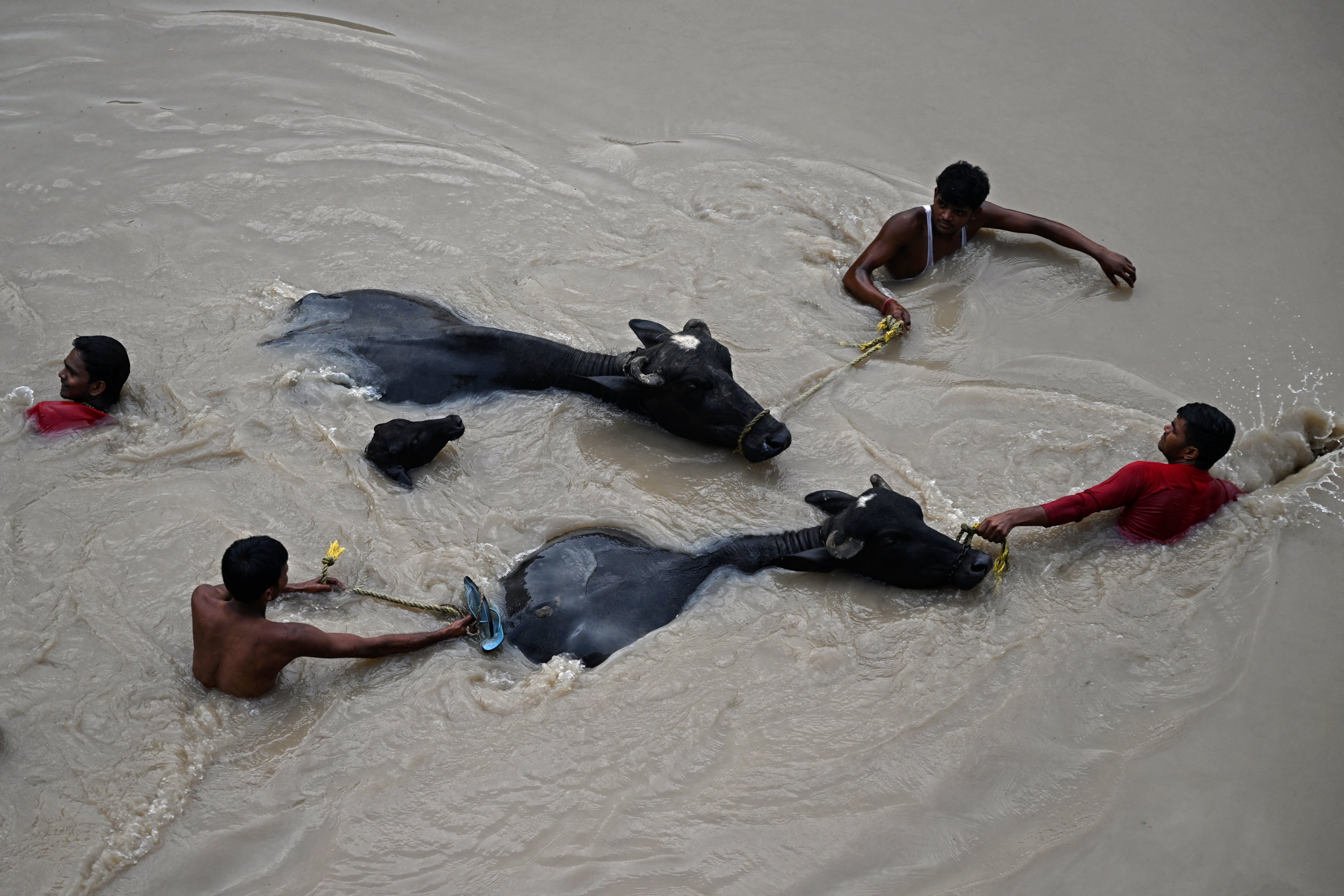North India rains: Thousands evacuated in Delhi as residents warned of drinking water crisis
Water spreads through Indian national capital as three water treatment plants get shut down

Your support helps us to tell the story
From reproductive rights to climate change to Big Tech, The Independent is on the ground when the story is developing. Whether it's investigating the financials of Elon Musk's pro-Trump PAC or producing our latest documentary, 'The A Word', which shines a light on the American women fighting for reproductive rights, we know how important it is to parse out the facts from the messaging.
At such a critical moment in US history, we need reporters on the ground. Your donation allows us to keep sending journalists to speak to both sides of the story.
The Independent is trusted by Americans across the entire political spectrum. And unlike many other quality news outlets, we choose not to lock Americans out of our reporting and analysis with paywalls. We believe quality journalism should be available to everyone, paid for by those who can afford it.
Your support makes all the difference.Floodwater has reached the centre of India’s national capital Delhi and covered important government buildings, key roads and historic forts, apart from sparking evacuations of thousands of people and warnings over a potential drinking water crisis in the city.
The floods have been caused by overflowing water from the Yamuna river that cuts across northeastern Delhi after the city state received a record amount of rain just days ago and amid widespread floods and devastation caused by extreme monsoon rains in India.
The floodwater on Friday reached key government buildings like the country’s supreme court, the Gandhi Memorial and the iconic Red Fort, just a day after the highest-ever water level was recorded for the river.
The severity of the increasing water levels is such that roads have been submerged in Delhi and three water treatment plants had to be shut down, leading to chief minister Arvind Kejriwal warning residents of a potential drinking water shortage.
The state government has already evacuated over 16,000 people from low-lying areas close to the river banks after the Yamuna swelled and crossed the 285-metre mark from the average mean sea level on Tuesday.
The water from the river, which accounts for more than 70 per cent of Delhi’s water supply, flowed into parts of the city through a broken drain regulator, authorities said.
Footage from Indian news agency ANI showed roads surrounding the city’s iconic Red Fort completely flooded, with broken down trucks and buses abandoned at several spots, only their windshields and roofs visible above the water.
The state government said the regulator, located near Delhi’s Indraprastha metro station, was in a state of “prolonged disrepair” and collapsed around 7pm (1330 GMT) on Thursday.
“The damage caused to the regulator has resulted in Yamuna flood water flowing towards the city as its backflow,” the government said in a statement, adding that work is underway to repair the breach.
Help is also being sought from the National Disaster Response Force (NDRF) and the army, tweeted Mr Kejriwal.
Movement on the metro rail network was affected while key roads turned into rivers, leading to major transportation delays.
The city’s ITO area, which houses several private and government offices, including the headquarters of the Delhi Police, was also flooded.
The record-breaking torrential downpour has also caused floods and landslides in the country’s mountainous regions, killing over 100 people.
The impact of the severe downpour continues even as it has appeared to have subsided in parts of northern India after wreaking havoc in over five states.
The excessive monsoon rain is the result of a combination of weather patterns as well as human-induced climate crisis and the El Nino phenomenon, experts said.



Join our commenting forum
Join thought-provoking conversations, follow other Independent readers and see their replies
Comments